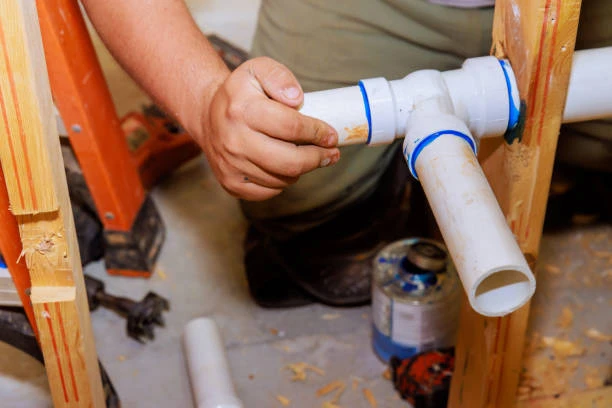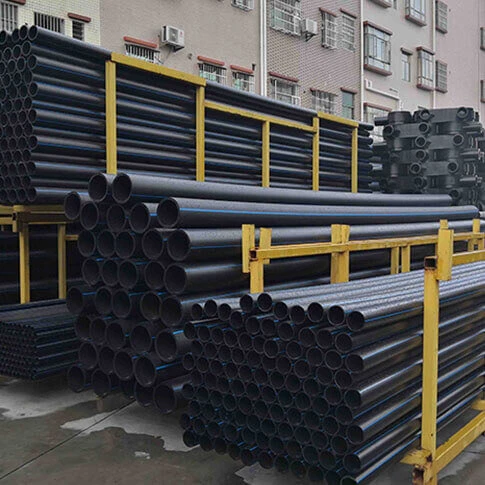In a decisive move to enhance public safety, Pattaya has implemented a ban on high-pressure PVC pipe guns, commonly used for various recreational activities. This action underscores the growing concern over the potential dangers associated with these devices, which can cause severe injuries, including blindness. As cities around the world grapple with ensuring public safety, Pattaya’s initiative highlights the importance of understanding the materials and safety practices involved in such equipment, particularly CPVC fittings.
Understanding PVC and CPVC Fittings
PVC (Polyvinyl Chloride) and CPVC (Chlorinated Polyvinyl Chloride) are popular materials use in plumbing, construction, and various DIY projects. While PVC is commonly use for cold water applications, CPVC is ideal for hot water systems due to its higher temperature tolerance. Both materials are know for their durability and resistance to corrosion, making them popular choices in residential and commercial construction.
The Dangers of High-Pressure PVC Pipe Guns
High-pressure PVC pipe guns, often crafted from standard PVC pipes and fittings, can be dangerous when misused. These devices operate by building up significant air pressure, allowing for projectiles to be launch at high speeds. While they may seem harmless, the potential for serious injuries is substantial, especially if the pressure exceeds the pipe’s rated capacity.
Risks Involved
- Blindness: One of the most severe risks is eye injury. A projectile launched from a PVC pipe gun can strike the eye with tremendous force, leading to permanent vision loss.
- Lacerations: Improperly constructed or malfunctioning guns can explode, sending shards of plastic flying and causing cuts and injuries.
- Legal Consequences: The use of such devices may lead to legal repercussions, particularly in regions where they are ban.
The Need for Regulation
Pattaya’s ban on high-pressure PVC pipe guns reflects a broader trend towards increased regulation of potentially hazardous recreational devices. Local authorities are recognizing the need to protect citizens from unregulated DIY projects that can lead to accidents. This move aligns with global efforts to ensure safety standards are upheld in various sectors, particularly those involving public interaction.

The Role of CPVC Fittings
CPVC fittings play a crucial role in the plumbing and construction industry, offering advantages in various applications. When discussing the safety and efficacy of PVC pipe systems, it’s essential to consider the components involved, including CPVC fittings.
Advantages of CPVC Fittings
CPVC (Chlorinated Polyvinyl Chloride) fittings offer numerous benefits that make them a popular choice in plumbing and construction applications. Here are some of the key advantages:
1. Corrosion Resistance
CPVC fittings are highly resistant to corrosion, which is a common issue with metal pipes over time. This property ensures that CPVC maintains its structural integrity even when exposed to harsh chemicals or environmental conditions, reducing the need for frequent replacements and repairs.
2. High Temperature Tolerance
One of the standout features of CPVC is its ability to withstand high temperatures, making it suitable for hot water applications. CPVC can handle temperatures up to 200°F (93°C), which is essential for residential plumbing systems where hot water lines are prevalent. This capability expands its usability in various industrial processes as well.
3. Ease of Installation
CPVC fittings are lightweight and easy to handle, which simplifies the installation process. They can be join using solvent cement, eliminating the need for welding or complex tools. This ease of installation not only saves time but also reduces labor costs during construction projects.
4. Cost-Effectiveness
The affordability of CPVC fittings, combined with their durability, translates into significant long-term cost savings. Although the initial investment may be slightly higher compared to traditional materials, the low maintenance requirements and longevity of CPVC result in reduced overall expenses for homeowners and contractors alike.
5. Environmental Considerations
CPVC is consider safe for transporting potable water as it does not leach harmful chemicals into the water supply. Many manufacturers are also adopting sustainable practices in producing CPVC products, including recycling initiatives. This makes CPVC a more environmentally friendly option compared to some traditional materials.
6. Sound Dampening Qualities
CPVC fittings are know for their sound-dampening characteristics, which help minimize noise produced by water flow in plumbing systems. This feature can be particularly beneficial in residential settings where noise reduction is a priority.
7. Wide Range of Applications
CPVC can be use in various applications beyond plumbing, including industrial piping, chemical processing, and drainage systems. Its versatility makes it a valuable material for different sectors, ensuring it meets diverse needs.
8. Resistance to UV Rays
While CPVC is primarily use indoors, it has a degree of resistance to ultraviolet (UV) rays, allowing it to be use in outdoor applications if adequately protect. This characteristic extends its usability in different environmental conditions.
9. Reduced Risk of Leaks
The joining method used for CPVC fittings creates strong bonds that minimize the risk of leaks. This reliability is crucial in both residential and commercial plumbing systems, helping to prevent costly water damage and promoting efficient operation.
Ensuring Safety with CPVC Fittings
When using CPVC fittings in any construction or DIY project, it’s crucial to adhere to safety guidelines. Here are some recommendations:
- Use Appropriate Materials: Always use CPVC fittings specifically designed for your application to prevent failures.
- Follow Manufacturer Guidelines: Ensure that you are following all manufacturer instructions, particularly concerning temperature and pressure limits.
- Inspect Regularly: Conduct regular inspections of plumbing systems to identify potential issues before they become serious problems.
- Educate Yourself: Stay informed about best practices in using and installing CPVC fittings to ensure your projects are safe and effective.
Conclusion
The recent ban on high-pressure PVC pipe guns in Pattaya serves as a wake-up call regarding the safety risks associated with unregulated DIY devices. While PVC and CPVC fittings offer numerous advantages in construction and plumbing, understanding their proper use and potential hazards is essential for public safety. As cities continue to evolve and prioritize the well-being of their residents, initiatives like these remind us of the importance of responsible usage of materials.

FAQs
1.What are the main differences between PVC and CPVC?
- PVC is suitable for cold water applications, while CPVC can handle higher temperatures, making it ideal for hot water systems.
2.Can CPVC fittings be used with PVC pipes?
- Yes, CPVC fittings can be use with PVC pipes, but it’s essential to ensure compatibility regarding pressure and temperature ratings.
3.What are the safety risks of using high-pressure PVC pipe guns?
- Risks include severe eye injuries, lacerations from explosive failures, and potential legal consequences due to their misuse.
4.How can I ensure the safe installation of CPVC fittings?
- Follow manufacturer guidelines, use appropriate materials, and conduct regular inspections to maintain system integrity.
5.Are there legal consequences for using banned devices like PVC pipe guns in Pattaya?
- Yes, using banned devices can result in legal repercussions, including fines or other penalties. Always stay informed about local regulations.


















